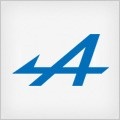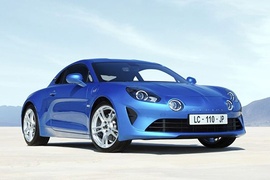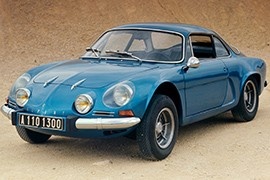
ALPINE A110
Generations Timeline, Specs and Pictures

Renault dug deep into its past, extracted the Alpine badge, and placed it on an entirely new car designed to beat Porsche Cayman.
Back in the ’60s, the Renault Alpine A110 won the Monte Carlo Rallye. It was a light and nimble car that slid around the snowy curves with the grace of a ballerina. Its handling helped it win the race a few times. As time went by, the car was improved, until it became too expensive and the sales dropped, and Renault pulled the plug on it. In 2016, the French carmaker revealed a concept car that recalled the shape of the original A110 and, in 2017, it launched the production model.
At the front, the quad headlight design with a round LED shape for the DRLs resembled the older model. Even the profiled line from the front’s trunk lid recalled the original model. It was a retro-design done well. The aerodynamic package was new, with a wide lower front grille and two side vents placed in front of the wheels, and those were functional. Its profile revealed a sloped rear window, similar to the one from the 1962 Alpine. With its LED taillights and the center-mounted exhaust, the rear side looked different from the original, and that was a good thing.
Inside, the carmaker installed sport bucket seats with high bolstering to keep their occupants in place during high-speed cornering. Its dashboard featured a digital instrument cluster with a design that recalled the original Alpine. A tall bridge connected the center stack with the center console, leaving a small storage area underneath it.
But the most important part of the mid-engined car was the drivetrain. It carried over the powerplant from the acclaimed Renault Megane RS but upgraded up to 292 hp for the top version. The standard gearbox was a seven-speed, dual-clutch automatic.

Alpine is part of the Renault carmaker, but it is focused only on performance cars.
But it is more than what M is for BMW or SRT for Dodge. It made completely different cars than the rest of its owner’s lineup.
History says that Alpine snatched the Monte Carlo Rally victory from other sports cars makers back in the ’60s. But over the years, the Alpine brand died after it was included in Renault and transformed into the Renault Sport brand. Yes, it still made sporty cars and featured different engines and suspension than the rest of the Renault range. Yet, it didn’t have a specific model. When Renault decided to revamp the Alpine brand, it created the A110, which resembled the original Alpine sports car: light, mid-engined, with round headlights, and a unique-shaped, fiber-glass bodywork.
In 2021, Alpine returned with a refreshed lineup, but most of its upgrades were on the interior, trims, and suspension.
Inside, the carmaker placed Sabelt seats with microfiber upholstery. On the dashboard, a 7” infotainment system was a clear sign of modernism. Moreover, it featured Android Auto and Apple CarPlay connectivity. The general sporty atmosphere was emphasized by the aluminum sport pedals enhanced by leather and aluminum trims from the cabin.
Behind the cockpit, the carmaker placed the same 1.8-liter turbocharged engine paired with a seven-speed automatic (dual-clutch) gearbox. Its 44:56 weight distribution allowed a predictive, oversteered car behavior.

The second generation of the Alpine was introduced in 1961 and it was mainly based on the existing Renault Gordini.
It was introduced as a coupe (Berlinette) and after that as a convertible.
The Alpine was for Renault what was the Shelby for Ford. It wasn’t a special department, but a different company. It was independent until 1973 when the state-owned Renault car-maker bought the small manufacturer and transformed it into the Renault-Sport department.
The A110 was largely based on its predecessor, the A108. It was designed by Giovanni Michelotti, who also worked for Ferrari, Maserati, BMW, or Triumph, to name just a few. The four-headlamps installed on the front were one of the main characteristics of the car. Since the engine was mounted in the back, there was no front air-intake to cool it. The short greenhouse featured a raked rear window. Behind, a short engine-compartment lid was placed between the two large air-scoops on the quarter panels. The bodywork was made out of plastic materials.
Inside, the two bucket seats were placed low on the floor. The instrument panel featured five dials, with a large tachometer on the left and the speedometer on the right. Under the dash, in the middle, there were pull-buttons for a few other functions of the car: two for ventilation, one for the fan, and the rear window defroster. The floor-mounted gear-stick for the 5-speed gearbox featured an aluminum ball.
The Alpine A110 was offered with few engine options, between 1.1-liter and 1.6-liter ranged between 55 hp and 140 hp. The light bodywork and the independent suspension in all corners made the car very nimble. And that’s how the French brand has beaten Porsche and took 6 overall victories in the 1973 World Rally Championship, including the famous Monte Carlo and Sanremo races.























































